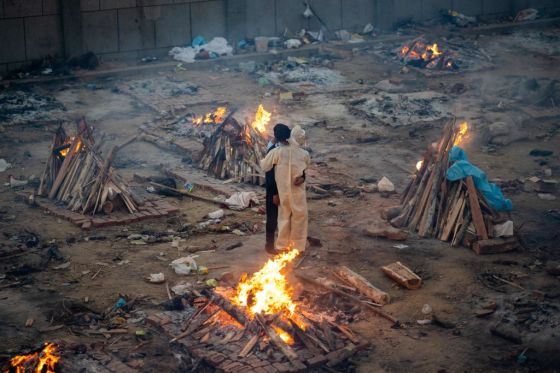[ad_1]
Asia’s reward for effectively tackling the COVID-19 pandemic will be some of the fastest economic growth in the world in 2021.
But, economic success could be thwarted by the region’s sluggish vaccine rollout and deadly new waves of COVID-19—especially the catastrophic outbreak that is claiming thousands of lives every day in India.
That is the promise—and the warning—of the Asian Development Bank’s 2021 economic forecast for the region, released Wednesday.
The 46 economies across the Asia-Pacific region, excluding Japan and Australia, are projected to rebound from the pandemic and grow by 7.3% this year.
Compare that with growth forecasts of 6.2% in the U.S. and 3.8% in the Eurozone, and Asian nations look likely to emerge much faster from the economic devastation caused by COVID-19.

The ADB, whose largest shareholders are Japan and the U.S., is a development bank that invests in projects meant to promote economic growth and reduce poverty across the Asia-Pacific region.
The severe outbreak in India drives home the urgency of governments across the region stepping up their lagging vaccination programs, says Abdul D. Abiad, the director of the ADB’s macroeconomic research division.
“It’s a race now between vaccinations/herd immunity, and new variants that can emerge and spread,” he tells TIME by email. “If the latter win, the recovery will lose traction.”
Although many places in Asia did relatively well at combatting the coronavirus, the region is now lagging in vaccine rollouts. The U.S. has administered at least one dose of a COVID-19 vaccine to more than 40% of its population, according to Oxford University’s Our World in Data project. In the wealthy city-state Singapore, a leader in Asia’s vaccination race, just over 20% of people have had a shot. In the financial hub Hong Kong, fewer than 12% of people have received a dose. Meanwhile, in India less than 9% of people, and in South Korea and Indonesia less than 5% of people, have had their first shot. Less than 2% of the population has received a first jab in Japan, the Philippines and Thailand—which are all battling new COVID-19 waves of their own.
The reasons for this are complex, but Abiad says right now the biggest challenge to vaccination programs in Asia is the supply of doses. “Demand from people wanting to get vaccinated exceeds available vaccine supply in most countries,” he says.
Read More: ‘I Pray for My Nani.’ The Survivor’s Guilt of Watching India’s COVID-19 Catastrophe Unfold From Afar
Other risks to Asia economic recovery include geopolitical tensions between the U.S. and China, limited vaccine effectiveness and long-term educational losses from school closures.
Divergent recovery paths
The region’s economic recovery will be uneven, as some countries battle fresh outbreaks. The ADB forecasts India to grow about 11% in 2021, though that figure is already at risk with the latest outbreak, says Abiad.

India is reporting more than 300,000 new cases a day with daily deaths nearing 3,000 (and the number of unofficial cases and deaths is believed to be much higher). Desperate pleas for oxygen and intensive care beds for sick patients have been circulating on social media platforms.
Still, in a press briefing, Yasuyuki Sawada, ADB’s chief economist, said India’s huge growth forecast remains “achievable.” He added: “India’s vaccine rollout is going well.”
Countries like China and Vietnam, which have strong exports of manufactured goods and kept COVID-19 under control have “been able to ride the wave of rising global demand,” Abiad says. China is forecast to grow more than 8% this year, after expanding by 2.3% in 2020—a year when many Asian countries fell into recession.
But even small COVID-19 outbreaks can threaten economic recovery. A COVID-19 surge of a few thousand cases a day in Thailand could set back the country’s plan to reopen tourism.
The Pacific region, also highly dependent on tourism, is expected to perform the worst of any area in the Asia-Pacific, with growth at a modest 1.4%. Travel bubbles are expected to help some countries start to recover.
“Tourist-dependent economies in the Pacific and elsewhere face a slow road back,” the ADB said.
[ad_2]
Source link





